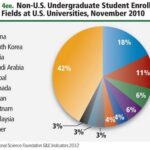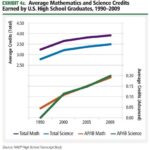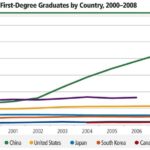Browse Resources by Year
Brazil’s 2012 Federal Budget authorizes ## million reais (US$## million) in funding for civil space activities. This represents an increase of ##% from the implemented budget for civil space activities in 2011. The Brazilian space agency, Agência Espacial Brasileira (AEB), received an authorized funding level of ## million reais (US$## million) in 2012. The Ministério da Ciência, Tecnologia e Inovação, the AEB’s parent organization, received an additional authorization of ## million reais (US$## million), of which ## million reais (US$## million) was intended to support the joint Brazil-Ukraine Alcântara Cyclone Space launch vehicle development program.
Read MoreGlobal military space spending is significant, but difficult to quantify. There are often major differences in how governments identify civil government versus military spending. Also, information on many aspects of military space spending is not publicly available. Despite these challenges, military space spending is estimated for this report using a methodology that combines public data with estimates for areas where data is not available. For example, total U.S. military space spending in fiscal year 2012 is calculated by applying the growth in identifiable DoD unclassified military space programs to the FY 2011 total DoD space spending figure. The 2011 figure is based on public statements made by top DoD space officials.
Read MoreNASA’s FY 2012 budget, provided as a Congressional appropriation through Public Law 112-55, The Consolidated and Further Continuing Appropriations Act, 2012, represented a ##% decrease from the agency’s FY 2011 enacted budget of $## billion.
Read MoreThe United States was responsible for ##% of global government space spending in 2012. During FY 2012, which ran from October 1, 2011 to September 30, 2012, U.S. government agency space budgets totaled $## billion, a ##% increase from 2011. Defense-related space activities, comprising the U.S. Department of Defense (DoD), the National Reconnaissance Office (NRO), and the National Geospatial-Intelligence Agency (NGA), totaled $## billion, or ##% of U.S. government space spending. The remaining ##% comprised space-related spending by NASA, the Department of Energy (DOE), the Federal Aviation Administration (FAA), the Federal Communications Commission (FCC), the Department of the Interior (DOI), the National Oceanic and Atmospheric Administration (NOAA), and the National Science Foundation (NSF), which collectively budgeted $## billion for space activities.
Read MoreGovernment space programs accounted for approximately $## billion in spending during 2012, representing ##% of the global space economy. Government investment in space grew by ##% in 2012, a rate lower than the average annual ##% growth rate between 2008 and 2012. The top-line figures, however, do not fully depict how some countries have significantly increased space spending while others have made cuts, as shown in Exhibit 2o below. Governments do not all operate under the same fiscal cycle, so international space spending numbers were derived…
Read MoreConsidering the number of doctoral degrees earned in science and engineering, the European Union has the greatest proportion, followed by China and the United States. As with first university degrees, China has been rapidly increasing the number of doctoral science and engineering degrees granted since the early 2000s.
Read MoreUniversities in the United States attract a large number of foreign students. The largest proportion of these students comes from China, followed by South Korea and India. Retaining these highly trained graduates is important, particularly at a time when global competition for this talent is increasing. . .
Read MoreTo understand the size of the pool of qualified students available for the future space workforce, it is important to know how many science, engineering, and aerospace degrees are being awarded.
Read MoreThe production of highly skilled scientists and engineers has its foundation in student performance during early education at the primary and secondary levels. Long-term trends in these areas show that students’ mathematics performance in the United States has been slowly improving over the past three decades.
Read MoreScience and engineering education provides the advanced skills required for a competitive space workforce. It also cultivates the expertise needed for research and innovation. Understanding trends in the production of highly skilled scientists and engineers can provide an indication of long-term prospects for the space workforce.
Read More

